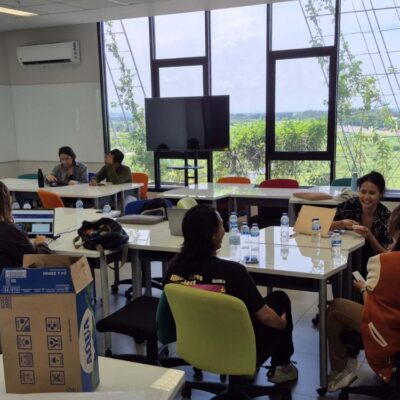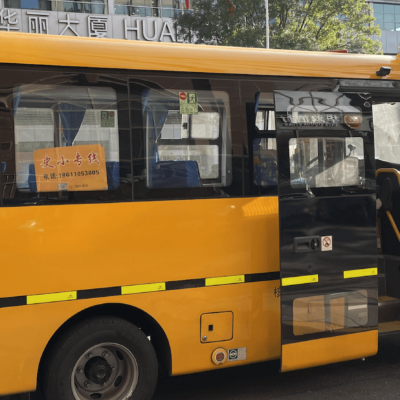Dear Australia, we need to talk about your Asia-literacy.
We used to place such a big emphasis on engagement with Asia through education, generating a multitude of highly researched and pedagogically rich resources. We used to run nationally accredited professional learning for our school leaders and educators in developing their knowledge, skills, and attitudes of Asia. We used to invest heavily as a nation in teaching a greater array of languages in our schools, particularly those from Asia. And for good reason. In the past three decades Asia has emerged as the driver of world economic growth and the centre of strategic contestation.
In business, trade, population, technology, arts, science, and of course in education, Asia has expanded, innovated, and shifted. Much of this has happened in ways we had long ago predicted. Some of the world’s most progressive and successful education systems are in Australia’s neighbourhood.
Australia has benefited greatly from our trade with Asia, as well as from the incredible growth in international students from Asia, and through migration. It has become a more diverse, exciting, and prosperous nation as a result. And yet things have stagnated and even gone backwards when it comes to our Asia-literacy. I’m referring to the combination of our knowledge, skills, and attitudes regarding Asian studies and languages. Asia-literacy should be an expectation of our education system, and though it’s there in principle in our national curriculum, the reality is vastly different.
We know that resourcing and supporting schools to teach Asian languages has not been sustained. Where we can gather some of the data, it’s clear that Asian languages drop off a metaphorical cliff in secondary school, with even fewer students studying an Asian language onto Year 12. For languages such as Indonesian, the student cohort is now half what it was just over a decade ago, with classes potentially in danger of disappearing completely in many schools. The OECD has made explicit links between the quality of global competence of students and their ability to speak another language. They now rank Australia second-last in the OECD on the ability of our students to speak a second language.
What kind of future are we creating for ourselves where we’re within the most diverse and fastest growing region in the world, but we can neither understand nor communicate with our neighbours? Asia-literacy matters. It’s not simply a nice-to-have skill or a matter of knowing our geography, it’s about having the intercultural understanding and the intercultural capability to connect, share, and cooperate for a shared future with our sphere of the world. It helps us gain perspective on the challenges and to amplify the opportunities. It would be wrong to assume that Asia is learning English, therefore we don’t need to bother. Language matters enormously in successfully navigating the social, business, and political milieu of the region.
In a recent submission to a Senate inquiry, Asialink — the AEF’s parent organisation — made it clear that “given there is a decline in research funding for Asia related topics, in the learning of Asian languages for students whose first language is English, and markedly less coverage of the region in our media, we risk greater superficiality rather than sophistication in our knowledge of Asian developments to the detriment of our national interests”.
There is no simple solution to the decline in Asian language teaching. Despite the Department for Education, Skills, and Employment (DESE) investing heavily in renewed national research on languages data in 2019, to be published in 2022, it’s easy to predict that the results will not be good. We’ll be stuck scratching our heads again on what to do or admitting that it’s all just too hard. But Asia-literacy is about more than language, it is about developing our mindsets and skillsets across intercultural learning. It’s about ensuring we have a wealth of perspectives and greater sophistication in Asian studies. It’s about recognising the growing multicultural character of our own society and ensuring it remains cohesive and harmonious.
This is what scares me most about the conversation we’re not having. Australia has no data or clear understanding about what students learn about Asia and Australia’s engagement with Asia through their education. We know very little about the kinds of conversations that are taking place between school leaders, educators, and then with students about Asia and the impact of these. Knowing that Harmony Day happens across many schools isn’t good enough.
AEF delivers several statewide and national programs designed to improve these conversations, such as Building Global Citizenship in Victoria and the long-running BRIDGE School Partnerships program. Programs such as these deepen the knowledge, skills, and attitudes of educators and the ways they work with their students around intercultural learning and Asia-Pacific relations. We know that many educators admit a lack of understanding and context to effectively teach and navigate Asian studies. More large-scale work needs to be done to understand and support our schools to connect with Asia beyond surface content.
AEF is already taking steps to address aspects of this. We are currently conducting a nation-wide consultation to develop a rationale on ‘Why Study Indonesian?’ (supported by the Australia Indonesia Institute of the Department of Foreign Affairs and Trade). This rationale aims to articulate stronger reasoning on why studies of Indonesia and speaking Bahasa Indonesia are an important offering in Australian education. AEF is also working to announce a range of new national programs for schools in 2022. In the meantime, we must hone our attention on several other elements.
Many will be aware that the Australian Curriculum Assessment and Reporting Authority (ACARA) has now released a draft Australian Curriculum for review, open for comment until 8 July. AEF was invited to provide guidance on two areas of this draft Curriculum. The first was ‘Intercultural Understanding’ within the General Capabilities category, and the second was the Cross-curriculum priority of ‘Asia and Australia’s Engagement with Asia’. We consulted with a range of experts and drew on our own research and experience to provide input. We took on board the intention to refine and reduce aspects of the curriculum. For example, on the Cross-curriculum priority, we proposed a three-step approach: Knowing Asia and its diversity; Understanding Asia’s global significance; and Growing Asia-Australia engagement.
These offer pedagogic foundations on which we can build understanding of Australia’s evolving relationships with the peoples of Asia, and how they influence both Australian and Asian citizenship and culture nationally, regionally and globally. We also emphasised that Australia and Asia are “interdependent through linked histories and contemporary realities”. These are crucial areas to address through the studies students undertake about Asia. They begin to link understanding and capability more explicitly, and they should be picked up across the curriculum.
On this note, it is concerning that there is an implied suggestion that curricula such as these should have ‘natural homes’, with ‘Asia and Australia’s Engagement with Asia’ being aligned to the Humanities and Social Sciences and Languages. It is both misguided and narrow to make such suggestions. Asian studies are highly relevant to the Arts, to Economics, to the Sciences, and even to Mathematics. In fact, AEF analytics on curriculum usage from our website in 2020 showed that the most popular intercultural resources were those on Mathematics rather than Geography. We’re not sure why, but it proves a powerful point about the creative ways some educators are looking to teach key concepts through the lens of Asia.
Beyond just these aspects of the draft Australian Curriculum, the area of Humanities and Social Sciences (HASS) adds new depth to Civics and Citizenship, with reference to Global Citizenship. It identifies the need for “recognition that we live in an increasingly interdependent world, where citizens’ identity transcends geography or political borders, and people have rights and responsibilities at a global level”. Such statements link with intentions in the 2019 Alice Springs ‘Mparntwe’ Education Declaration for students who “…are informed and responsible global and local members of the community who value and celebrate cultural and linguistic differences, and engage in the global community, particularly with our neighbours in the Indo-Pacific region”. Now is a good opportunity to make these links much more explicitly.
This points to the need for Asian studies to both stand alone as a key focus and be embedded in other disciplines. It should not be lumped solely with intercultural understanding or into the Asian language basket at a school. By making siloed assumptions that Languages are a ‘natural home’ for Intercultural Understanding and Asia and Australia’s Engagement with Asia, we are again watering down the potential richness and diversity in how teachers and students can discover connections and insights. This particularly includes the stereotyping of Asia as ‘out there’ rather than Asia being an integrated and highly present and contemporary part of Australian society itself. Our own communities are wellsprings of Asian studies.
Asian studies and the intercultural learning our teachers and students benefit from will likely always be inconsistent. It’s a truism for many learning areas that the more you try to make them consistent across a wider geography, the less relevant they become. As the previous CEO of ACARA, Rob Randall, once said to me “the curriculum is only a guidebook, not a rulebook”. Teachers need the latitude to use their imaginations to bring subject matter alive. Asian studies need to be highlighted for their creativity of application and resources, for their diversity and sophistication, an approach that reflects the reality of Asia itself. Organisations such as AEF have some incredible archives that could have a new lease of life online.
Asialink stipulated in its submission to the Senate inquiry that “we must embrace a coordinated national strategy, combining federal and state governments and education providers, to achieve Asia literacy and set targets for its achievement”. In fact, if Australia wanted to really accelerate this work, it would open up even more opportunities for Australian educators to collaborate with our peers across Asia-Pacific. There are so many amazing schools and educators in our region that are keen to work on improving the quality of education for students anywhere. Perhaps then, our collective curriculum and our conversations could then indeed be called ‘world-class’.
Hamish Curry is Executive Director of Asia Education Foundation, at Asialink, The University of Melbourne.
This article has been republished with the permission of AsiaLink.
Main image: Students engaged in intercultural learning, Yarra Road Primary School, Victoria. Credit: AEF.




